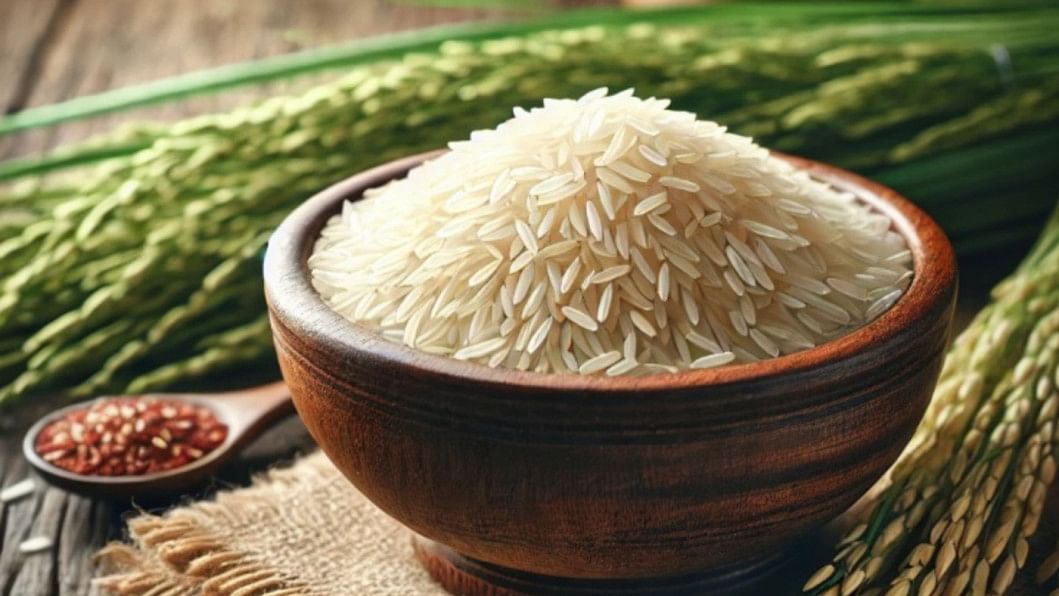Govt approves export of 25,000 tonnes of aromatic rice

The interim government yesterday approved the export of 25,000 tonnes of aromatic rice by 133 companies.
Among the companies, Square Food and Beverage, Pran-RFL Group, Akij Essentials Ltd, and Mother Moon Enterprise received approval to export 500 tonnes each.
Meanwhile, Tanveer Food Ltd, Ajik FM CG Ltd, Ispahani Foods Ltd, Unicorn Distribution Ltd, and Bangladesh Edible Oil Ltd were permitted to export 400 tonnes each.
Commenting on the development, Md Abdur Rahim Khan, additional secretary (export) to the Ministry of Commerce, told The Daily Star yesterday afternoon that approval had been given to export fragrant rice until September 30.
"Exporters will have to comply with nine conditions," he said.
"Whether the export opportunity will be extended beyond the specified period will be determined based on a decision from the higher authorities," Khan added.
Pran-RFL Group congratulated the government on the initiative.
Kamruzzaman Kamal, director for marketing at Pran-RFL Group, said, "We thank the government for allowing the export of aromatic rice after almost two years of closure."
"There is a huge demand for our country's aromatic rice in various parts of the world. However, due to the prolonged suspension, this market had been captured by India and Pakistan," he said.
"Now that the government has permitted exports, we hope to reassert our position in the international aromatic rice market, as we did in the past," he said.
"Currently, the government has approved the export of 25,000 tonnes of aromatic rice," said Kamal.
"We hope this amount will gradually be increased in light of market demand," he added.
"Moreover, we urge the government not to impose another sudden halt on aromatic rice exports. If exports are abruptly stopped, exporters suffer greatly," he said.
The production of aromatic rice has nearly doubled in Bangladesh over the past seven years, with farmers showing interest in growing the grain in order to profit from its higher prices compared to traditional parboiled rice.
Farmers produced 5.79 lakh tonnes of aromatic rice in fiscal year 2017–18, while the amount produced in fiscal year 2023–24 was 10.23 lakh tonnes, according to a food ministry document.
Data from the Bangladesh Rice Research Institute show that a total of 33 types of aromatic rice are currently being cultivated in the country. They are typically grown during the Aman season.
A food ministry official said growing demand in both domestic and international markets, coupled with attractive prices, has motivated farmers to expand cultivation in recent years.
Consequently, traditional indigenous varieties are being increasingly replaced as farmers shift to high-yielding alternatives offering greater profitability.
While local varieties generally yield between 187 and 299 kilogrammes (kgs) of rice per bigha, high-yielding aromatic varieties can produce between 448 and 821 kgs per bigha.
Naogaon, Rajshahi, Panchagarh, Rangpur, Mymensingh, Dinajpur, Sherpur, and Thakurgaon are key hubs for the commercial production of aromatic rice in the country.
Data from the Export Promotion Bureau (EPB) shows that export earnings from aromatic rice totalled $2.88 million in fiscal year 2019–20, before falling to $2.06 million the following year.
In fiscal year 2021–22, $1.07 million worth of aromatic rice was exported. However, exports were banned in 2022–23.
According to the EPB data, no aromatic rice has been exported since then.

 For all latest news, follow The Daily Star's Google News channel.
For all latest news, follow The Daily Star's Google News channel. 



Comments